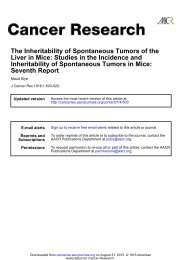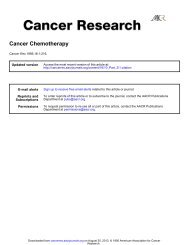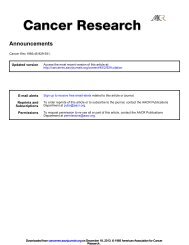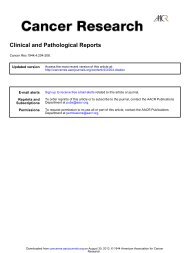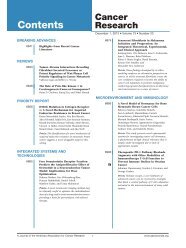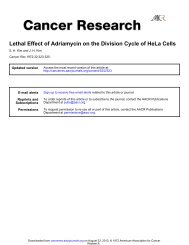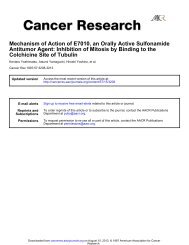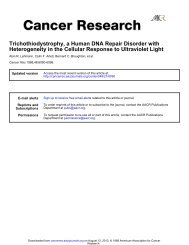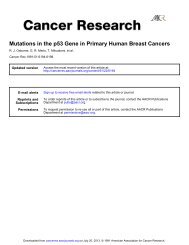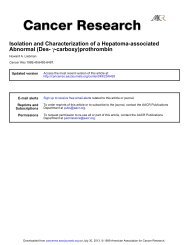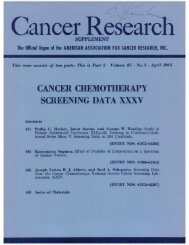XANTHOMA OF THE BREAST In a series of nine hundred (circa ...
XANTHOMA OF THE BREAST In a series of nine hundred (circa ...
XANTHOMA OF THE BREAST In a series of nine hundred (circa ...
You also want an ePaper? Increase the reach of your titles
YUMPU automatically turns print PDFs into web optimized ePapers that Google loves.
Downloaded from cancerres.aacrjournals.org on December 28, 2013. © 1932<br />
American Association for Cancer Research.<br />
<strong>XANTHOMA</strong> <strong>OF</strong> <strong>THE</strong> <strong>BREAST</strong> 1085<br />
Past History: There was no history <strong>of</strong> cancer in her family to her<br />
knowledge. She had never been ill except for a fractured knee many<br />
years ago. She had lost 21 pounds within recent years, having formerly<br />
weighed 170, now 149.<br />
Present Illness: Five years previously, about 1925, she had first observed<br />
a small lump in the upper inner portion <strong>of</strong> the left breast. It had<br />
grown very slowly to attain its present bulk. It had been painless. The<br />
patient had no cough or bone pains.<br />
Physical Examination: The patient was a fairly well nourished, elderly<br />
woman. Most <strong>of</strong> her fat was abdominal. Scattered over her skin, most<br />
prominent on the abdomen and face, were many brown to black macular<br />
and papular lesions which resembled senile keratoses. The heart and<br />
lungs were not remarkable. The blood pressure was 165 systolic and 70<br />
diastolic.<br />
FIGS. 1 AND 2. CASE 1: PRIMARY <strong>XANTHOMA</strong> <strong>OF</strong> <strong>BREAST</strong>, BE~'ORE (LE~'T) AND AFTER<br />
RADIATION<br />
Occupying the upper inner quadrant <strong>of</strong> the right breast was a tumor<br />
(Fig. 1) measuring 9 em. in diameter and elevated 4 em. above the surface<br />
<strong>of</strong> the breast. The skin over it was reddened and shiny. The middle<br />
<strong>of</strong> the tumor was s<strong>of</strong>t--suggesting a central area <strong>of</strong> necrosis. It was<br />
slightly movable over deeper structures. The nipple was not retracted.<br />
There were no nodes palpable in the right axilla or supraclavicular space.<br />
<strong>In</strong> the left axilla several small, s<strong>of</strong>t nodes were felt.<br />
Repeated urine examination frequently showed a trace <strong>of</strong> albumin<br />
and occasional granular casts. Blood urea nitrogen was 12.1 mg. <strong>In</strong><br />
addition the urine regularly contained sugar-as much as 2 per cent.<br />
Blood sugar on admission was 166 mg. Roentgenograms <strong>of</strong> the chest<br />
were negative.<br />
A diagnosis <strong>of</strong> adenocarcinoma <strong>of</strong> the breast with impending ulceration,<br />
and chronic nephritis and diabetes was made.



